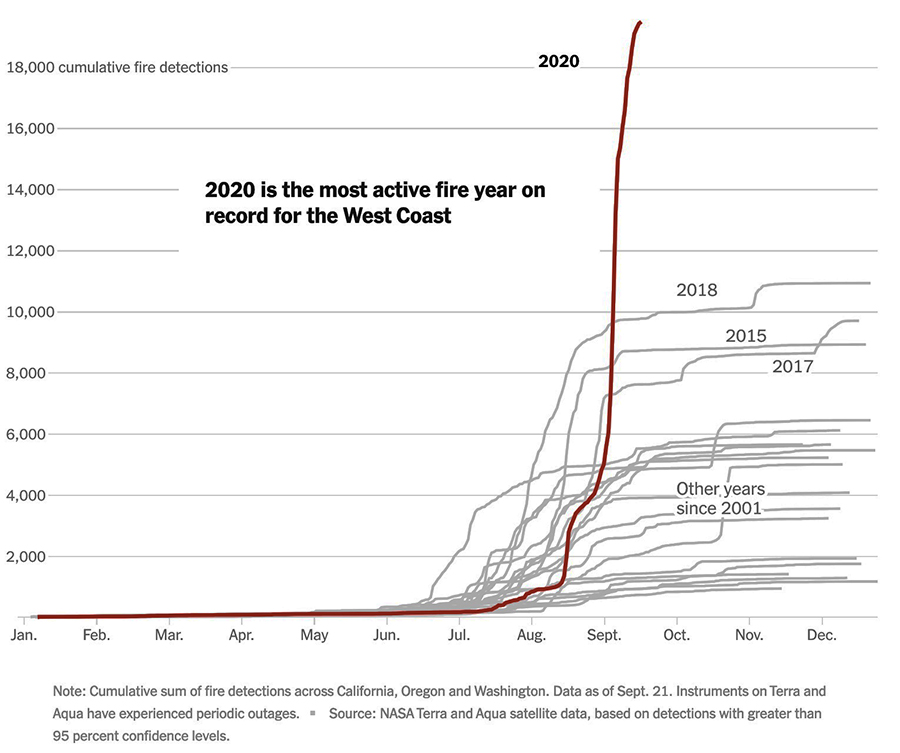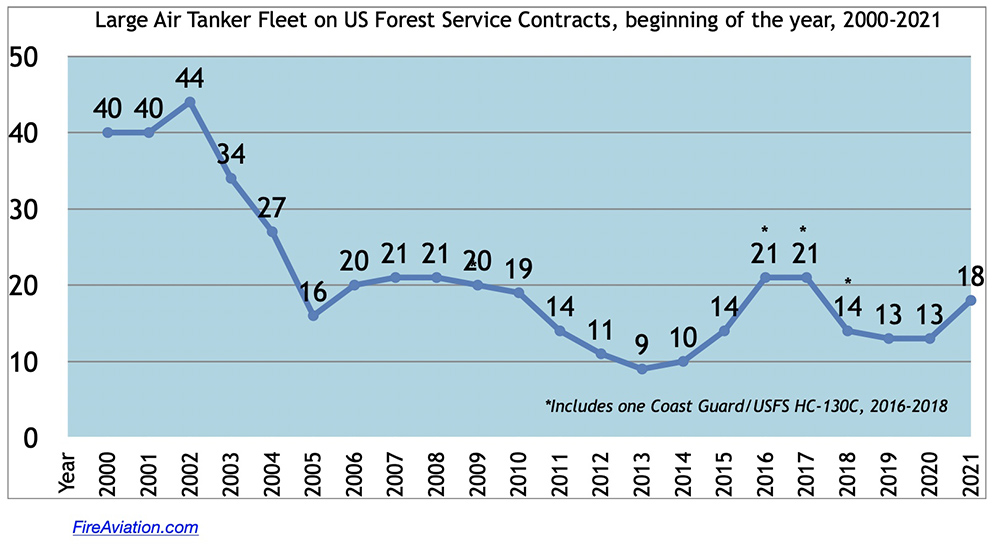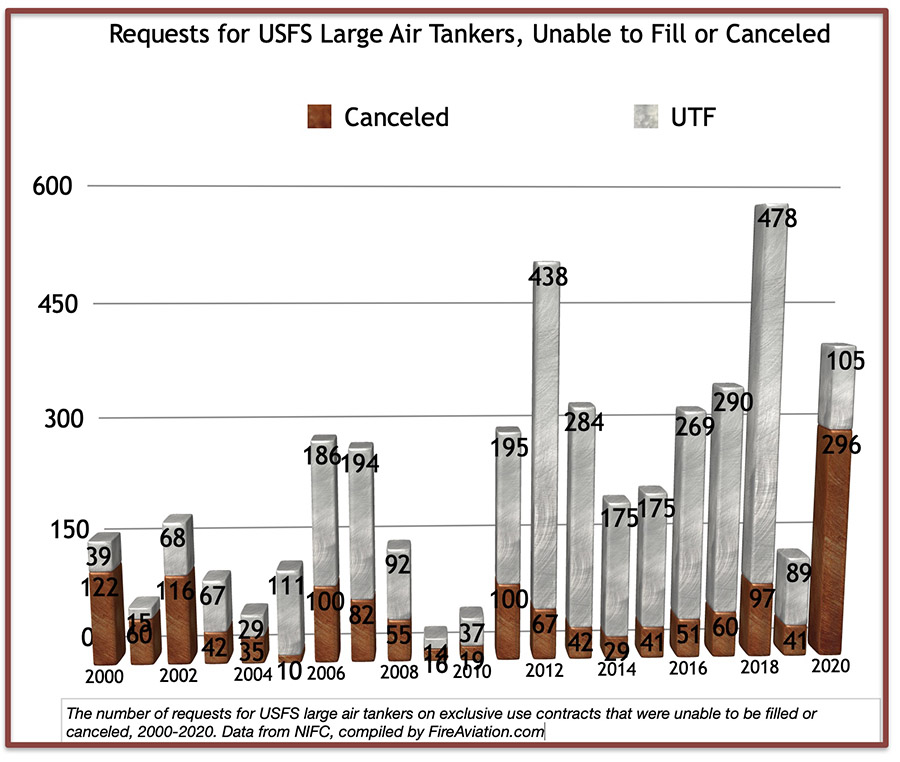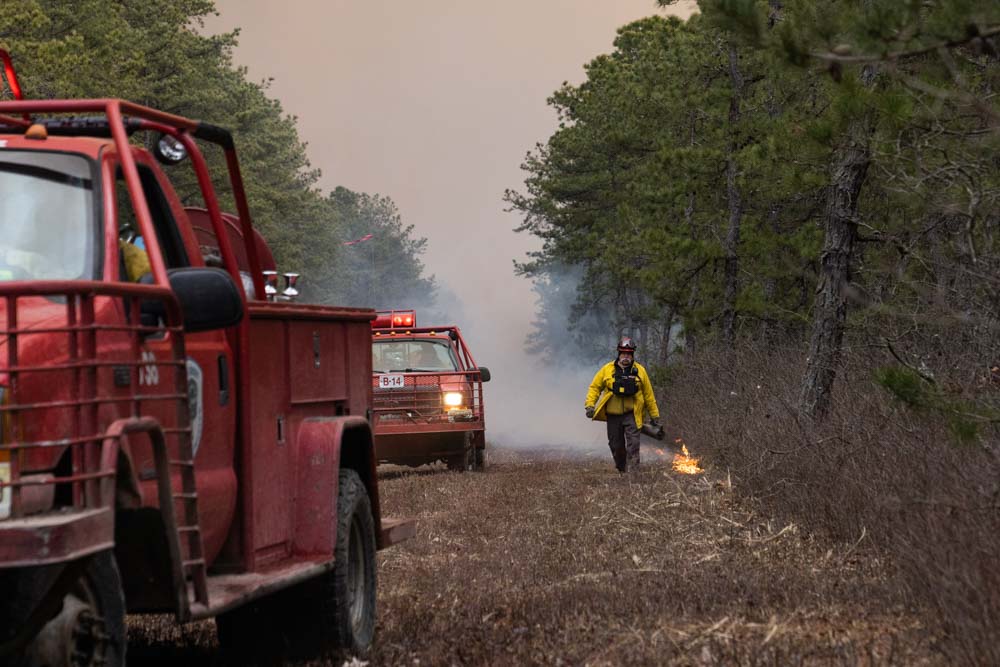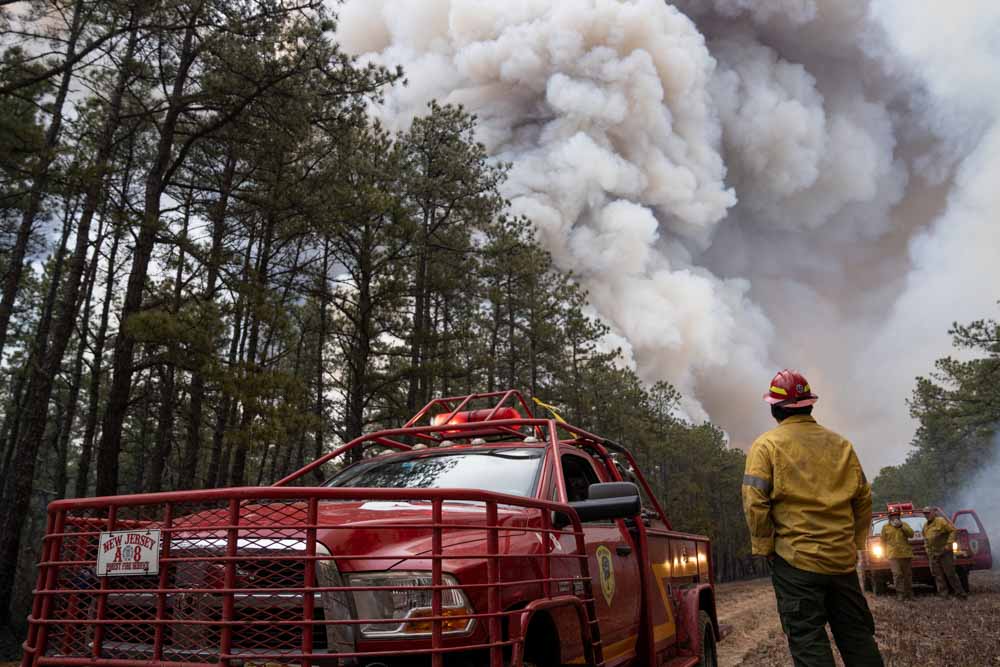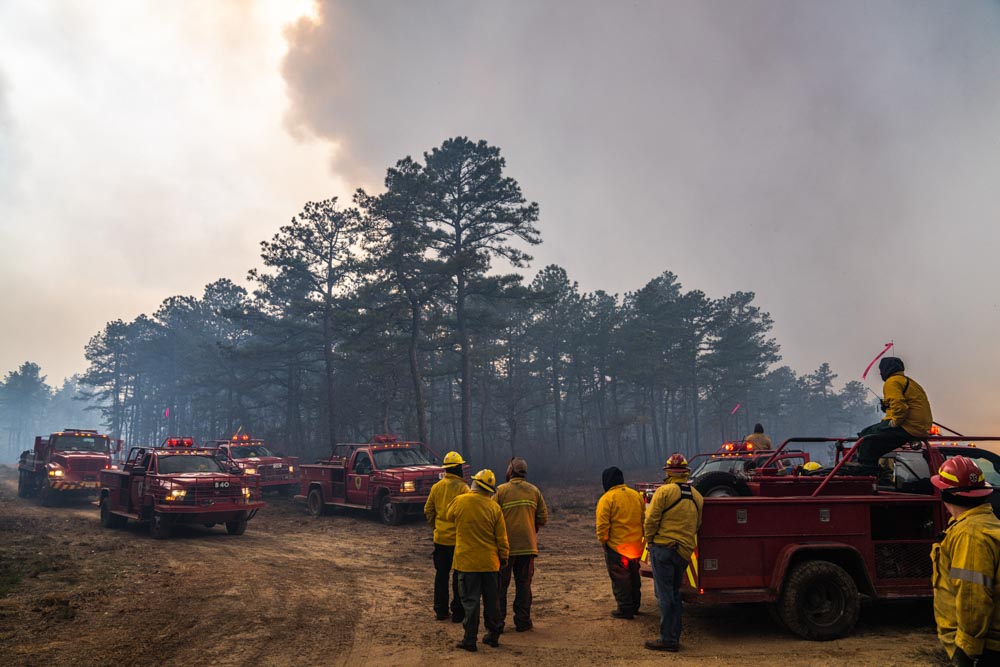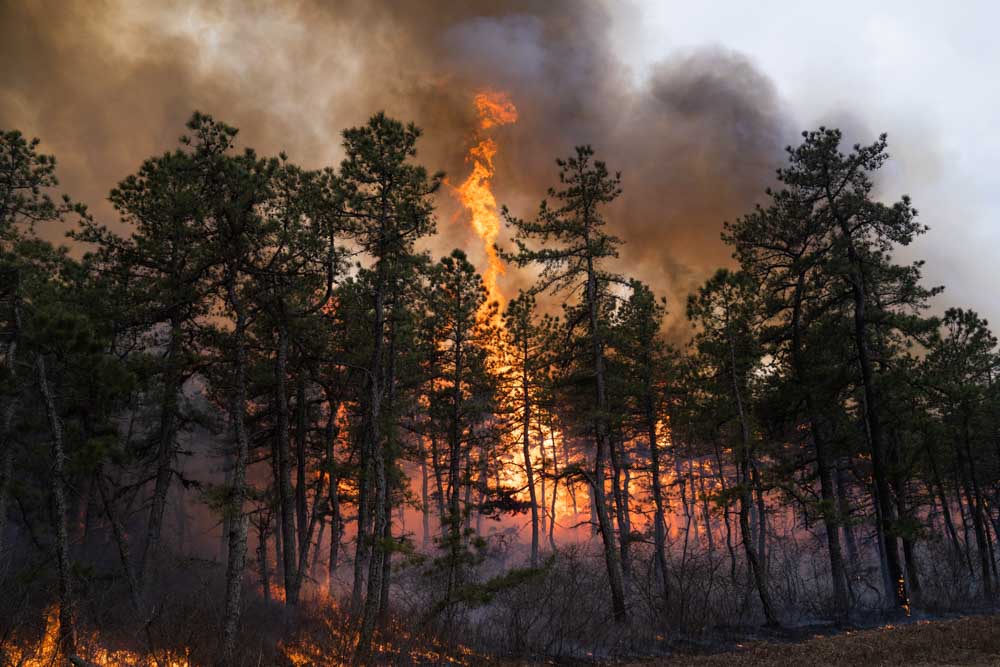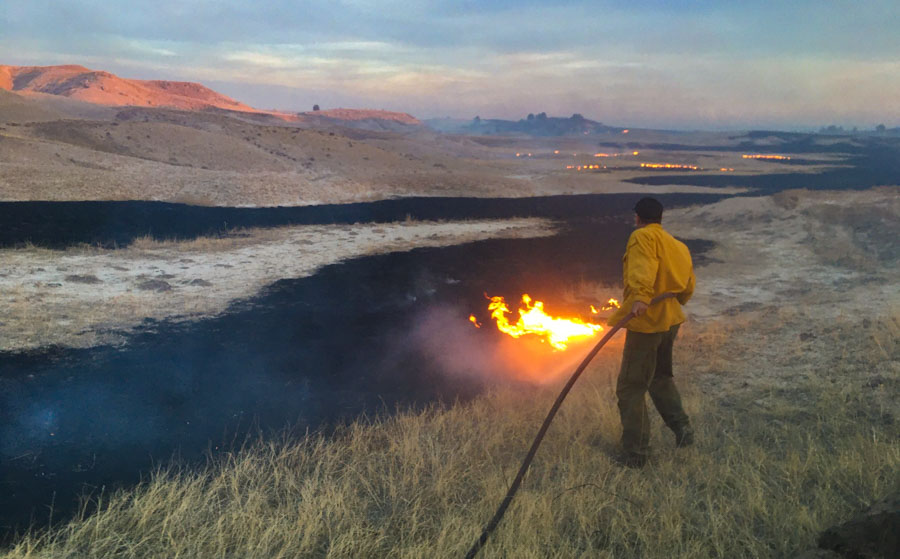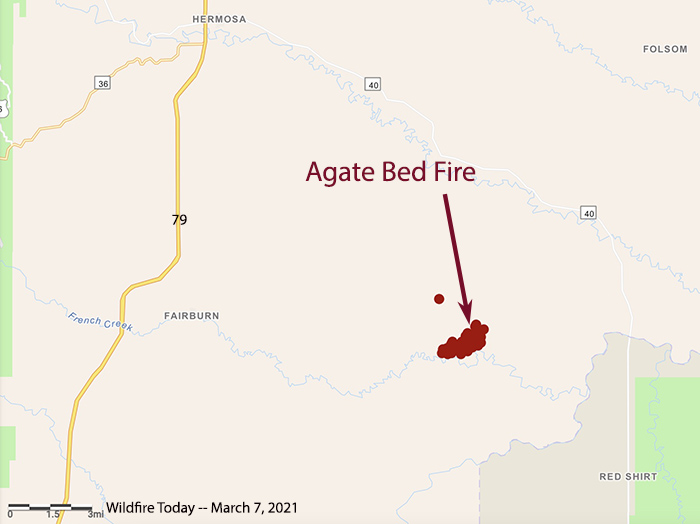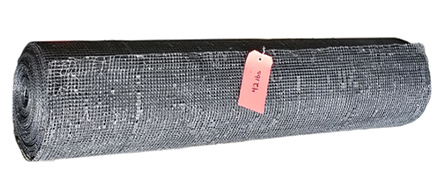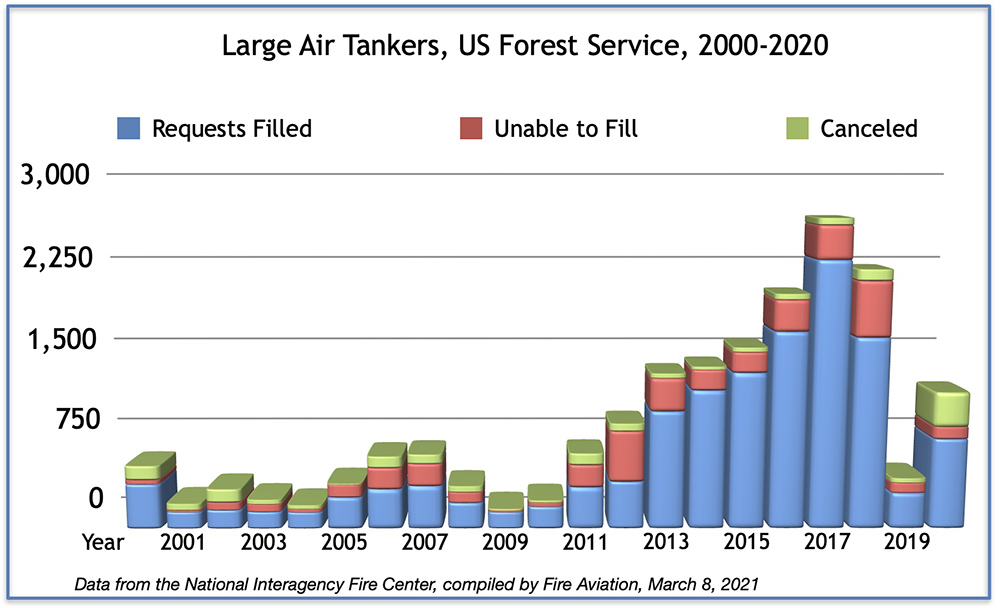
The U.S. Forest Service has 18 large air tankers on exclusive use (EU) contracts this year.
In 2020 the agency started out with 13 on contract in April and May but by June 24 had added 11 on modified call when needed (CWN) contracts for a total of 24. Modular Airborne FireFighting Systems C-130 aircraft from the National Guard and Air Force Reserve were deployed from July 23 until October 4 in 2020, usually two at a time.
This year the 18 EU large air tankers are being supplied by five vendors:
- Six, Aero Flite (RJ85)
- Four, Erickson Aero Tanker (MD87)
- Four, Neptune Aviation (BAe-146)
- Two, Coulson Aviation (C-130)
- Two, 10 Tanker (DC-10)
The dates they will first be on duty could change if the Forest Service decides they need to come on early, but the scheduled 160-day “mandatory availability periods” (MAP) which are different for every air tanker specify that two will begin in March (11th and 17th) and most of the rest will start in April and May. The MAPs end August 18 through November 20 for the 18 aircraft, but those dates could be extended if necessary.
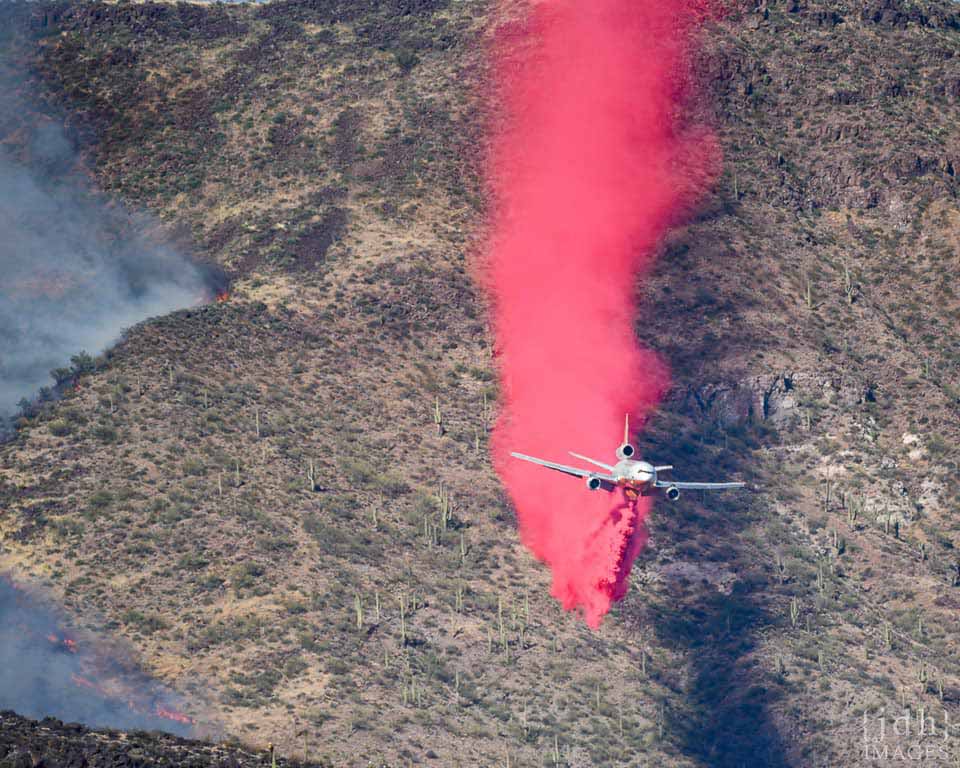
The 2020 fire season started with much less activity than average (see the chart below) but when hundreds of fires began burning millions of acres in the West in mid-August, the number of large air tankers on contract was less than was actually needed. September 19 saw 32,727 fire personnel deployed, the highest number since August 24, 2015 when 32,300 were assigned. Many fires during that six-week period had numerous requests for ground and aviation firefighting resources that were unable to be filled when the fires were discovered. This allowed some of the blazes to grow virtually unchecked for days — or longer. In 2020, 34.3 percent of the requests for large air tankers were either cancelled or unable to be filled.
Since 2001 the four years with the highest number of total fire detections in Washington, Oregon, and California have all occurred since 2015, according to satellite data processed by the New York Times in September of last year.
